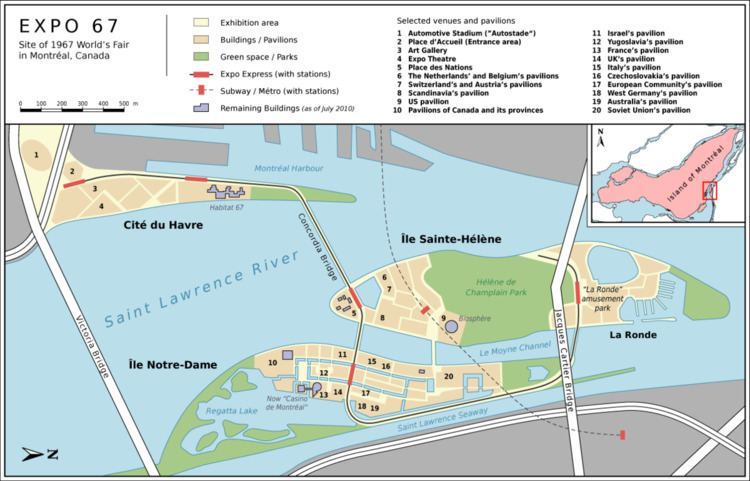 | ||
The Expo 67 International and Universal Exposition featured 90 pavilions representing Man and His World, on a theme derived from Terre des Hommes, written by the famous French pilot Antoine de Saint-Exupéry.
Contents
The exposition displayed many nations, corporations, industries, technologies, social themes, religions and designs, including the U.S. pavilion, a geodesic dome designed by Buckminster Fuller. Expo 67 also featured Habitat 67, an urban modular housing complex designed by architect Moshe Safdie, whose units were purchased by private Montrealers after the fair was concluded, and is still occupied today.
The most popular display of the exposition was the soaring Soviet Union pavilion which attracted about 13 million visitors. Rounding out the top five pavilions (by attendance) were: Canada (11 million visitors), the United States (9 million), France (8.5 million), and Czechoslovakia (8 million).
The participating countries were:
Absent countries included the People's Republic of China, Spain, South Africa (banned from BIE-sanctioned events due to its apartheid policy), and many countries of South America.
National pavilions
(From the Official Guide of Expo 67)
Theme pavilions
(From the Official Guide of Expo 67)
